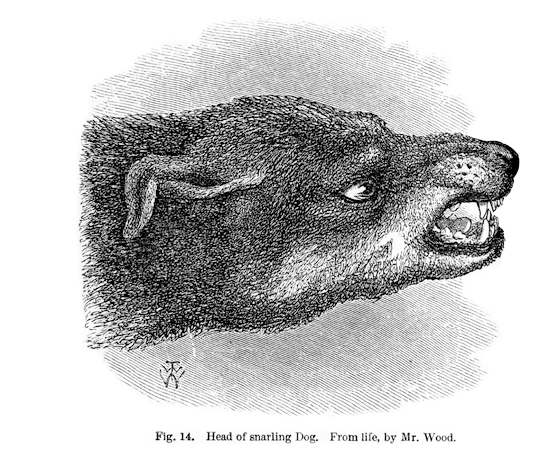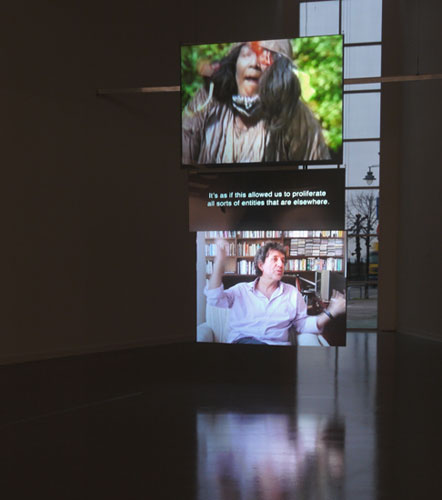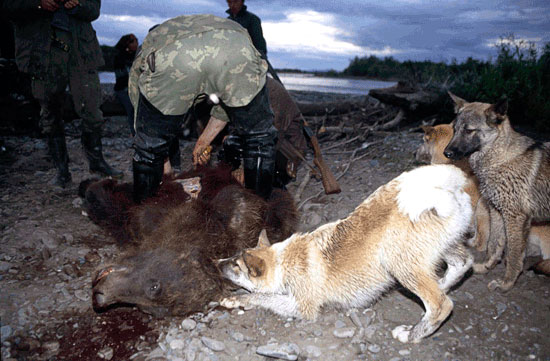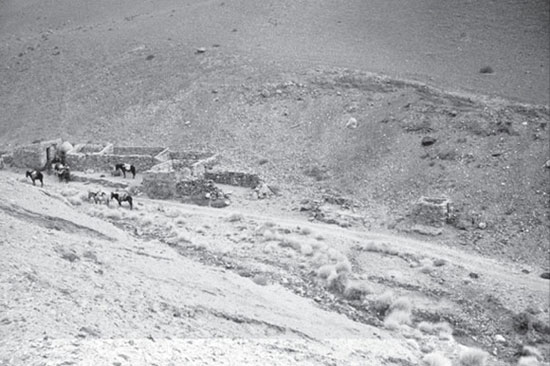Some people love to divide and classify, while others are bridge-makers—weaving relations that turn a divide into a living contrast, one whose power is to affect, to produce thinking and feeling.
But bridge-making is a situated practice. As a philosopher, I am situated: a daughter to a practice responsible for many divisions, but which may also be understood as a rather particular means of bridge-making. The mathematician and philosopher Alfred North Whitehead wrote that all Western philosoph...
Issue #36
July 2012
With: Anselm Franke, Isabelle Stengers, Harry Garuba, Spyros Papapetros, Diedrich Diederichsen, Michael Taussig, Angela Melitopoulos, Maurizio Lazzarato, Rane Willerslev, Alejandro Haber, Cornelius Borck, and Tom Holert
For the Summer 2012 issue of e-flux journal we are very pleased to present a special “Animism” issue guest-edited by Anselm Franke, curator of the exhibition by the same name. Even if you missed Animism on tour in Europe since it began at Extra City and MUHKA in Antwerp in 2010, you have probably learned of its encompassing mobilization of the systems of inclusion and exclusion defining “science” and “culture.” The various stages of the exhibition have shown the discourse of animism to be a cruc...
View List
View Grid
12 EssaysJuly 2012
It might even be said that the fetish is the consummate form of power for Marx insofar as it mystifies and materializes in the same gesture, insofar as it crystallizes the necessity and inevitability of mystification for materialization. Indeed, if fetishism is that process whereby power as a relation is obscured through reification, through the guise of an object, then what Marx calls material life, with its thoroughly objective, tangible and concrete character, is always already fetishized.
...
Picture an English garden on a hot summer day in the early 1870s. Charles Darwin is resting on a bamboo armchair in the backyard of his Down House at Kent, with his dog beside him. One or more women must have been strolling around, leaving an open parasol behind. Suddenly a slight breeze blows, the parasol moves, and the dog starts growling. The stillness of the picturesque landscape is instantly shattered and from the English countryside we are suddenly thrown into the jungle:
The tendency...
1. The Grin and Smile of the Inanimate
My three-year-old nephew plays with toy cars and model trains just like I did fifty years ago when I was his age. I recently wanted to give him a present, and so, thrilled with nostalgic anticipation, I walked into the toy department at a large store for the first time in decades. I was truly baffled by what I saw there: there was not a single car, not a single locomotive, crane, truck, construction vehicle, sports car, or tractor without eyes, a nose, a...
I never thought that a thing like a burned match, or a scrap of paper in the mud, or a fallen leaf, or a rusty worthless nail might have a soul. The Yorikke taught me otherwise.
—B. Traven, The Death Ship
1. It Is As If the Arrow Is Thinking
For seven months, Juan Downey lived in the Amazon forest with some Yanomami Indians. In 1979 he made a video called The Laughing Alligator about this experience. There are many stories in this movie, but to my mind the stories are secondary to t...
The exhibition Animism sets out to provide a different context for reflecting on an old topic in the theory of art, one that has considerable reverberations in the present: the question of animation. Rather than investigating the effect of animation merely within the registers of aesthetics—for instance, by presenting a collection of artworks exemplifying different ways of achieving the effect of life or the lifelike within a field demarcated by the dialectics of movement and stasis—this exhibit...
Today, it seems interesting to me to go back to what I would call an animist conception of subjectivity, if need be through neurotic phenomena, religious rituals, or aesthetic phenomena. How does subjectivity locate on the side of the subject and on the side of the object? How can it simultaneously singularize an individual, a group of individuals, and also be assembled to space, architecture and all other cosmic assemblages?
—Félix Guattari
1. Animism and Psychosis
Jean Claud...
In social anthropology, we have seen a development away from studies of the so-called old animism, in the traditional sense of E. B. Tylor,1 toward what Graham Harvey has referred to as “the new animism.”2 Central to the approaches of new animism researchers is a rejection of previous scholarly attempts to identify animism as either metaphoric—a projection of human society onto nature as in the sociological tradition of Emile Durkheim3—or as some sort of imaginary delusion, a manifestation of “p...
After twenty years conducting archaeological research on the Atacama plateau of Northwestern Argentina, in the Antofalla territory of the south-central Andes (where I also live and teach), I wanted to undertake a test excavation near the recently modified stone fence of an agricultural plot. I asked Severo Reales, the owner of the plot, for permission, though I had already acquired legal authorization from the state anthropology bureaucratic agency. Severo said he had no problem at all and that ...
Animism began in the sciences, when the chemist and physician Georg Ernst Stahl coined the term for describing the specificity of living matter, its distinctive character vis-à-vis non living things. Its modern, almost inverted meaning, however, goes back to the Anthropologist Edward Burnett Tylor who used it to characterize a worldview that does not discriminate—or at least, not properly—between living and non-living matter but believes in “universal animation of nature” (Tylor: Primitive Cultu...
One must wonder now whether it is useful to keep to the animist strands and currents in popular beliefs about (as well as venerable theories of) political economy, capitalism, and the commodity—or is it actually quite futile? The question seems rather pertinent when it comes to posing Anselm Franke’s Animism project clearly and polemically within contemporary anticapitalist, anti-neoliberal, and decolonizing struggles. I see it as a potential contribution to the productive confusion generated by...










